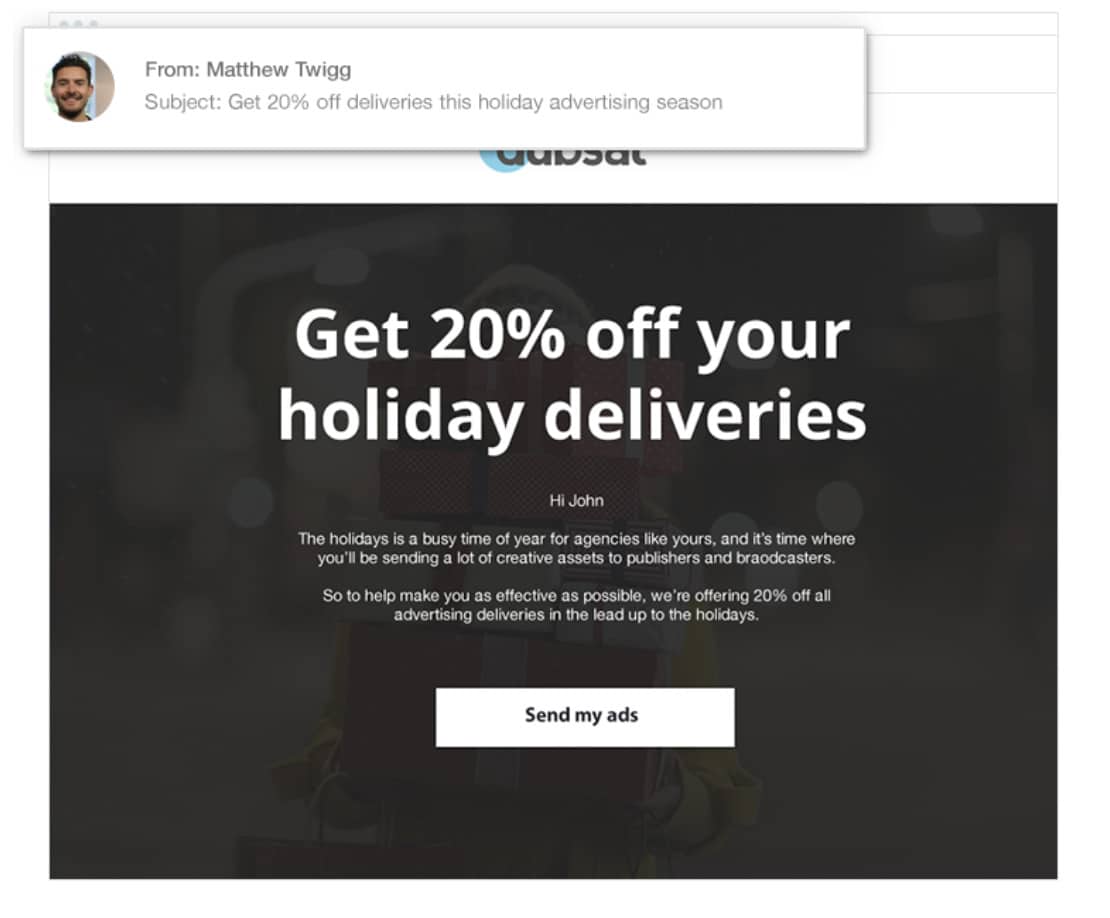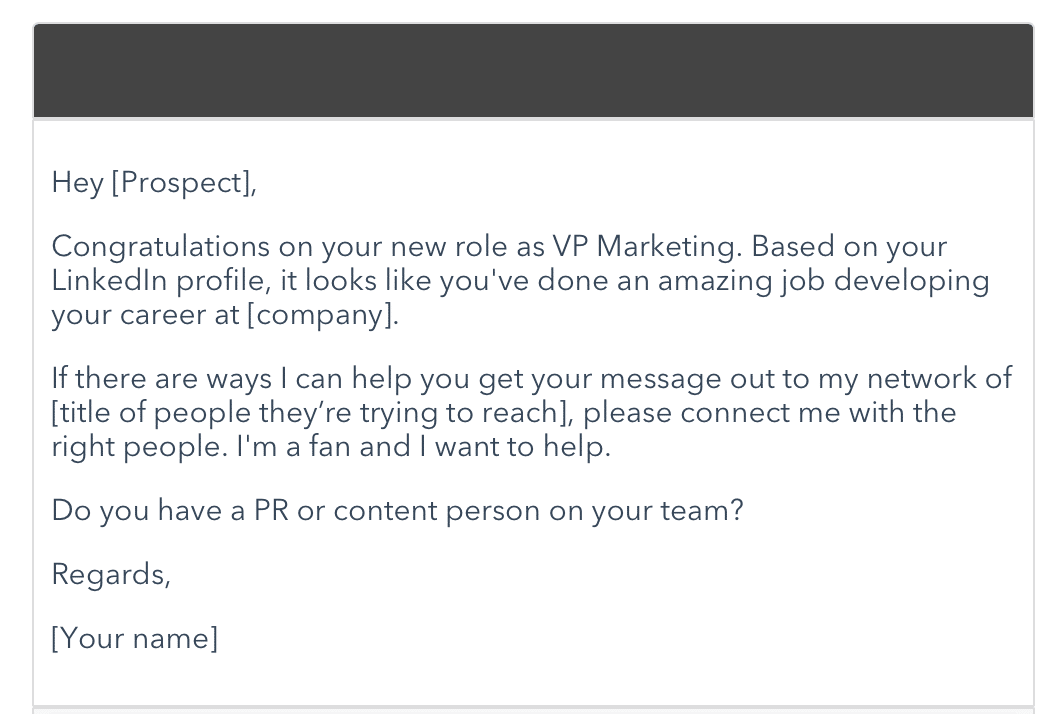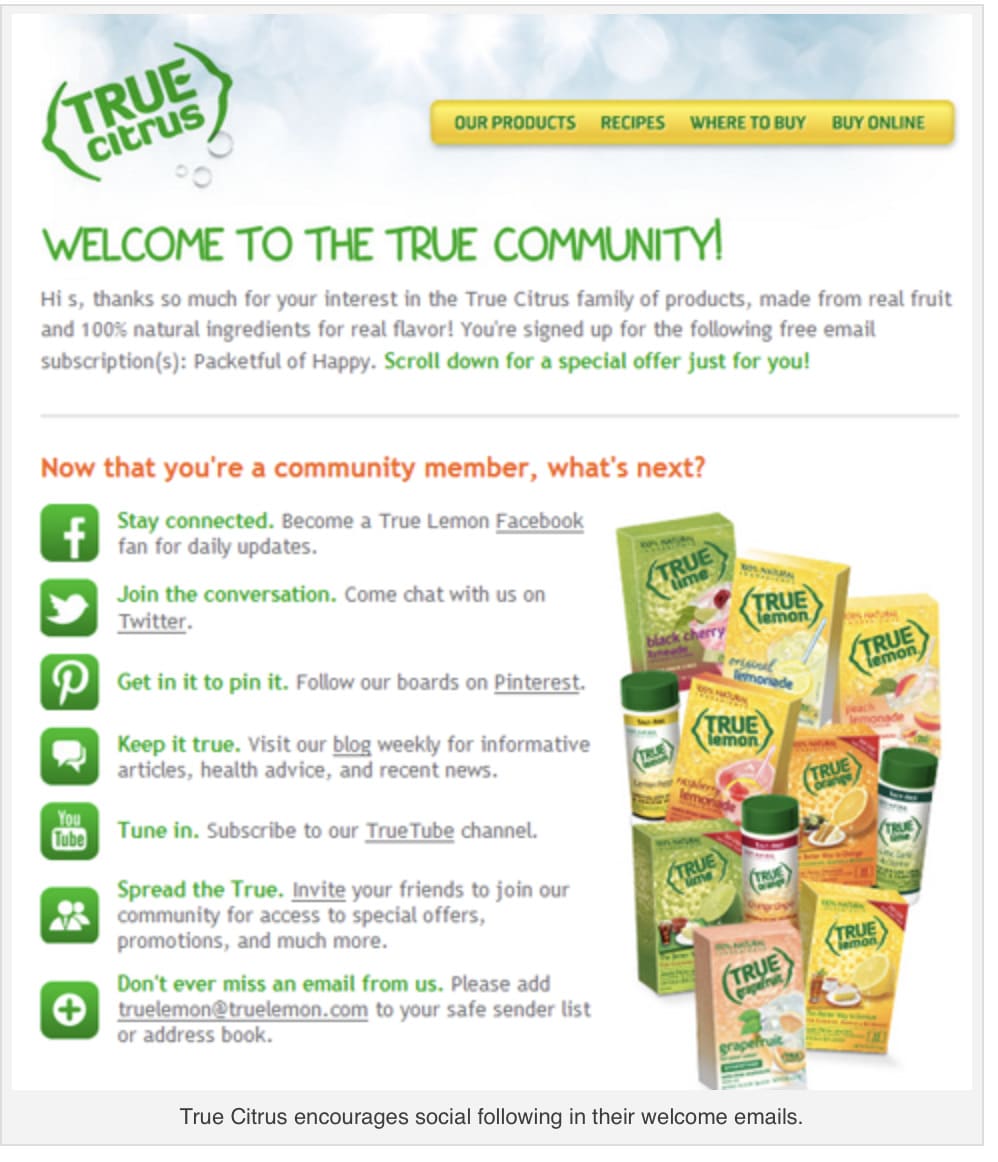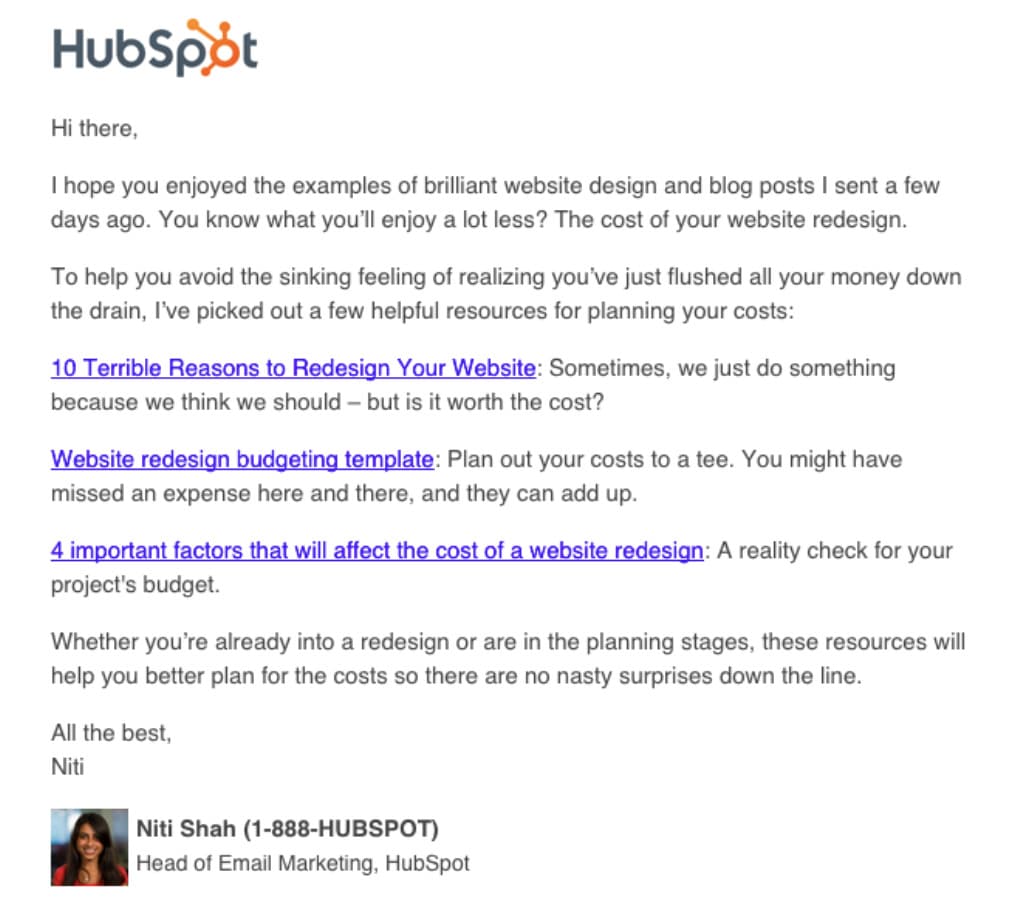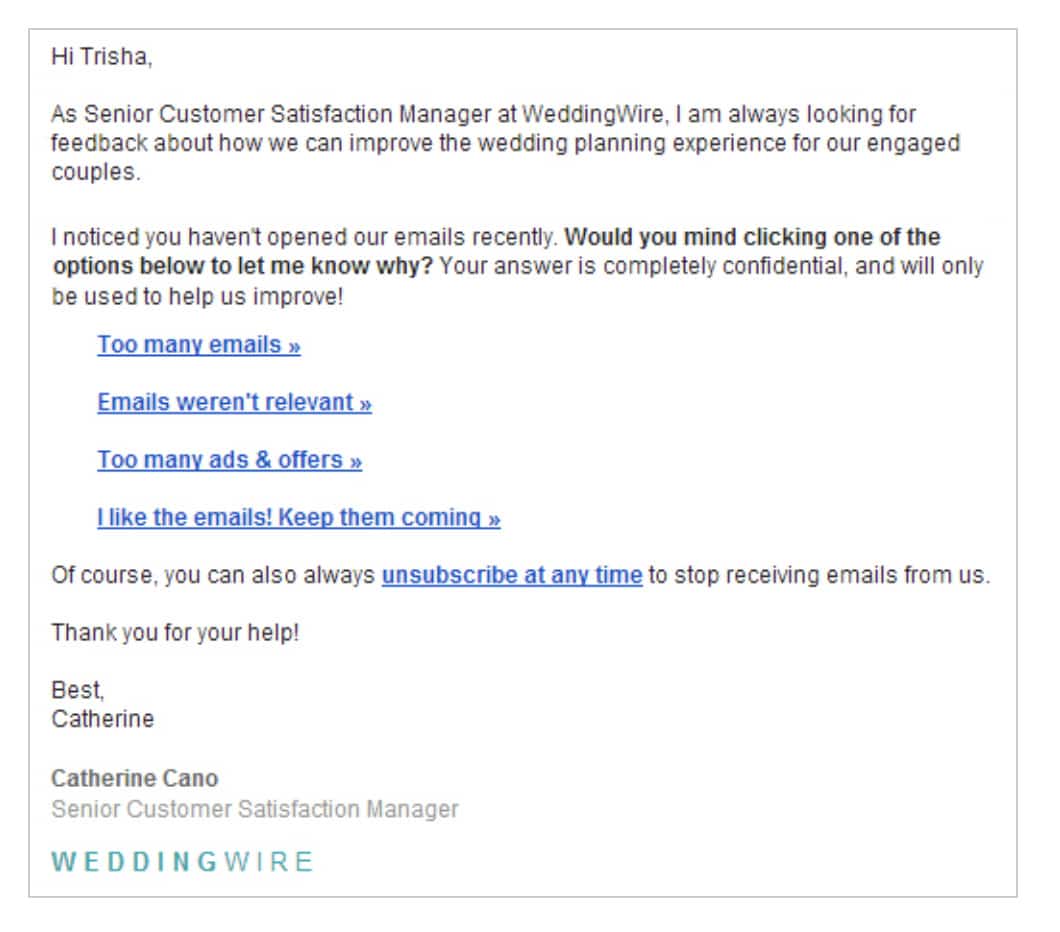Is email marketing inbound or outbound?
Many people aren't sure whether to consider email an inbound or outbound marketing tactic. The truth is, it can be both.
Before we dive into the reasons why, let’s start with some definitions.
Outbound marketing is associated with cold-calling and media buying—ways of saturating the market to “get your brand out there.”
Unfortunately, spammy emails are also a hallmark of outbound marketing, In general, though, outbound marketing relies on paid ads and face-to-face meetings as well as cold-calling and blanket sales emails.
Typical examples include:
- TV ads
- Billboards
- Flyers
- Tradeshows
- Direct email marketing
- Paid Google ads
- Paid Facebook ads
Inbound marketing, on the other hand, is a "pull" strategy. It implies action by—and organic interest from—the consumer. In inbound marketing, you encourage customers to need and want your product or service, so they look for you when they need help.
Typical vehicles for inbound marketing include:
- Blogging
- Social media
- Podcasting
- Ebooks
- Videos
- SEO
- Content marketing
- Marketing through opt-in emails
Even paid search is considered inbound, since results only appear to consumers if they are actively searching for that product or service.
Is email marketing inbound or outbound? Here’s the difference.
Now let’s fine-tune our subject and take a closer look at how email marketing can impact your marketing strategy and generate business.
While email can indeed be used as a way to “cold call” prospects, it’s more effective—and more common—to use email as an inbound tactic.
Inbound email marketing is a great way to build trust and nurture relationships that lead to sales.
Here are the hallmarks of good inbound email marketing and how outbound email compares.
1. Inbound emails are targeted.
Gone are the days when marketers purchased email lists and sent a random “blast” of outbound marketing emails, hoping that someone, somewhere will show some interest.
Nowadays, that kind of thing can violate the rules under the General Data Protection Regulations (GDPR).
Today’s email marketing strategies include using Customer Relationship Management (CRM) technology to segment your audience list based on a number of factors, including:
- Growth potential
- Job position
- Industry
- Geographical location
- Demographic data
- Type of relationship with you (B2B vs. B2C)
Of course, the good thing is, you can use any metric to divide your target audience into highly-specific groups that allow you to fine-tune emails for higher conversions and a better click-through rate.
Best of all, these contacts are already primed to do business with you, because they’ve opted in through your blog or website.
2. Inbound emails are shareable.
Inbound emails can get you more impressions for your efforts by being easily shareable through social media—or with a quick click to forward to a colleague, friend, or family member.
To begin with, emails with infographics and video content can increase your click-through and open rates by as much as 55%.
And image-based marketing, like infographics, are liked and shared up to three times more than other content.
That’s triple the marketing value!
To create an inbound email with a video or infographic, you embed a link in your email that will take your reader to the content that’s hosted on your site. Customers can share the URL with associates with a simple click.
With outbound emails, sharing is more difficult because they miss half of what research says is necessary in creating a shareable email—they aren’t personalized or segmented.
3. Inbound emails are valuable.
Inbound email marketing is subtle, and powerful when you include new opt-ins. A good strategy is to provide content that provides at least one of the following points:
- Helps them do their job better
- Answers burning questions
- Gives them more information on the benefits of your product or service.
Acting as an information conduit is a great way to nurture a relationship that will naturally evolve into a sale in further emails.
While outbound marketing emails can share valuable information, their “blast” nature means that many of the people receiving them don’t need—or want—the information contained.
4. Inbound emails are custom-tailored.
Not only can you personalize your emails to make your prospects feel valued and considered, but you can fine-tune the timing of your marketing according to customer triggers or the natural timeline of your sales cycle.
This example from Campaign Monitor is personalized in two ways—the recipient’s name is used and the email appears to come from an account manager, not a random email address.
Most outbound emails are not personalized—and their click-through and bounce-rate reflects this. To personalize an outbound email, you’d have to research individual contacts—and that takes time and money.
Here’s an outbound example from Hubspot that shows personalization:
While it does have a personal element, it might come across as off-putting or disingenuous, since the marketer has no prior relationship with the customer.
On the other hand, emails that are triggered by customer actions can gently—and effectively—move your prospect through your sales funnel.
Take a look at these examples of great inbound email marketing strategies:
Trigger: Downloaded information
Your prospect has downloaded an ebook, PDF or whitepaper that resides on your website or registered for a mini-class or webinar by opting into your email list.
Inbound response: Call-to-action for the next step
You can follow up with “housekeeping” details like time of class or “how to download” instructions, while including an introduction to you and your product or service.
Then, you can ask them to take the next step, like offering a free trial, requesting more information, or sharing on social media.
Here’s a great example from Social Media Examiner:
Colorful graphics and clickable social links make this email eye-catching and fun.
Trigger: Viewed specific content online
If you have a series of landing pages or content opt-in options, you’ll be able to segment your audience based on interest and pain points.
Inbound response: Tailored follow-up content
Now that you know your prospect’s interests and/or problems, you can custom-tailor a follow-up email to give them additional information or solutions directed at their specific needs.
Here’s a HubSpot email that nails this technique:
This new content not only builds a relationship, but it gets them back to your site again.
Trigger: Took first step in your series, then paused
Sometimes customers lose interest after signing up for a trial, class, or targeted content.
Inbound response: More information and alternatives
There can be many reasons why they didn’t complete—or go beyond—that initial action. It could be that they had more questions, hesitated at filling out a form, or simply got busy and forgot about it.
A good follow-up inbound email could present related resources or content, provide alternative actions like speaking to customer service or getting a demo or even asking them outright about their hesitation.
Sending a “can we help?” email can open up further discussion and contact and continue to nurture your relationship.
Here’s an example from Litmus.
This example directly addresses hesitation and allows the lead to determine how they’d like to be marketed to.
5. Inbound emails are cost-effective.
Because they are taking advantage of a lead that’s already shown interest in your product or service by opting into your list, inbound emails are one of the most cost-effective marketing tools.
Statistics show that inbound marketing is 61% less expensive than similar outbound marketing, with an average cost-per-lead of $134 versus $332.
A recent Hubspot report found that no matter what type of business you operate—B2B or B2C—you’ll be three times likelier to see a higher return on investment (RO!) with inbound over outbound marketing.
6. Inbound emails can evolve.
Your marketing strategy is not a once-and-done plan, particularly in the digital age where technology and environment are in a constant state of flux.
As technology and ways to shop and find information evolves, consumer preferences change along with them, ensuring that any good marketing plan is one that can easily pivot to take these changes into account.
Inbound email marketing can be changed on-the-fly to keep your strategy focused on your customers' current needs, wants, and preferences.
Outbound marketing by its very nature is not personalized or laser-focused. This makes it much harder for outbound emails to tackle customer-centric changes in markets and behavior.
Wrap up
So, is email marketing inbound or outbound?
While email marketing can function as both inbound and outbound part of your marketing strategy, using inbound email to target and retain prospective customers in a cost-effective and winning strategy for most businesses.
Inbound emails allow you to foster a sincere and long-term relationship with clients that can move them through your sales funnel in a subtle and effective manner.
Best of all, inbound email is easily customizable for easy customer segmentation, personalization, and even changes in your marketing strategy, making it a great way to stay on top of emerging trends and changes in customer pain points.
MOST RECENT ARTICLES
Want to engage your audience and grow your brand? Try Emma's robust easy-to-use product today.

